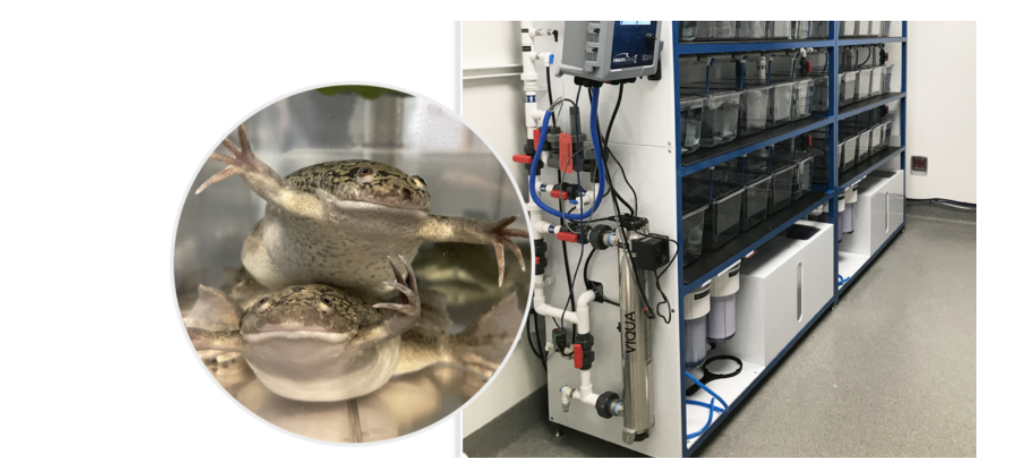How Model Organisms Are Accelerating the Future of Oncology Research?

In laboratories worldwide, tiny zebrafish and other model organisms are revolutionizing our understanding of cancer. These seemingly simple creatures are providing unique and precise insights into one of humanity’s most complex diseases, accelerating the journey from basic research to life saving treatments.
The Evolution of Cancer Models
Cancer research has transformed dramatically over the past decades. Traditional approaches relied heavily on two-dimensional cell cultures; this research was valuable but failed to capture the intricate dynamics of tumor development in living organisms. The tumor microenvironment is a complex cellular neighbourhood surrounding tumor and cancer cells.
Today’s model organisms offer a different paradigm entirely. Modern cancer models encompass genetically engineered mouse models that develop tumors identical to human cancers and transparent zebrafish embryos that allow real-time visualization of cancer cell behavior. These models bridge the gap between controlled laboratory conditions and the complex reality of human disease.
Zebrafish models have emerged as particularly valuable contributors. Their transparent embryos allow researchers to observe cancer cell behavior in real-time, watching as tumors form, grow and potentially spread. The genetic conservation between zebrafish and humans is sharing approximately 70% of human genes which makes them especially relevant for studying cancer mechanisms that translate directly to human disease.
Patient-derived xenograft (PDX) models represent another significant advancement where human tumor tissue is transplanted into laboratory animals while maintaining the genetic and molecular characteristics of the original patient’s tumor. This provides unprecedented opportunities to evaluate personalized treatment approaches.
Key Applications Driving Future Research
Accelerated Drug Discovery
Model organisms are fundamentally reshaping drug discovery timelines. The zebrafish xenograft model has become particularly powerful for high-throughput drug screening, allowing researchers to test hundreds of potential therapeutic compounds simultaneously in living organisms rather than isolated cell cultures.
Recent breakthroughs have pushed these timelines even further. Cancer researchers reported in 2024 that zebrafish-based approaches require only 9 days to deliver treatment verdicts for blood cancers and 10 days for solid tumors. This rapid turnaround could revolutionize personalized cancer treatment allowing oncologists to test multiple treatment options for individual patients before selecting the most effective approach.
Understanding Metastasis
One of the most significant advantages of model organisms is their ability to model metastasis, the process by which cancer spreads throughout the body. Traditional laboratory methods struggled to study this complex process effectively.
Zebrafish excel in metastasis research because of their transparent embryo and juvenile nature and well-characterized vascular system. Researchers can directly observe how cancer cells invade blood vessels, travel through the body, and establish new tumors in distant organs. This real time visualization has revealed new molecular mechanisms controlling metastasis and identified potential targets for preventing cancer spread.
Precision Medicine Applications
Experimental systems for studying human cancer now include diverse models from fruit flies to genetically engineered mice, patient-derived xenografts and computational cancer models. This research diversity is valuable for precision medicine approaches where treatment selection is based on individual patient tumor characteristics.
Patient-derived xenograft models allow researchers to maintain human tumor samples in laboratory animals while preserving the genetic and molecular characteristics that make each patient’s cancer unique. These models can then assess multiple treatment options, identifying the most effective approach for individual patients.
Biomarker Discovery and Tumor Microenvironment Studies
Model organisms are accelerating biomarker discovery—molecular signals that predict cancer development, progression, or treatment response. The genetic tools available in organisms like zebrafish allow researchers to systematically investigate how specific genes contribute to cancer and identify molecular signatures associated with different disease outcomes.
The tumor microenvironment—the cellular and molecular environment surrounding cancer cells—plays a crucial role in cancer development and treatment response. Model organisms provide unique opportunities to study these complex interactions in their natural context, leading to insights that have driven the development of immunotherapy approaches.
The Future of Model Organisms in Oncology
Advanced Genetic Engineering and AI Integration
CRISPR-Cas9 and other gene editing technologies are revolutionizing model organism capabilities. Researchers can now create precise genetic modifications that mirror specific mutations found in human cancers, allowing for highly accurate models that recapitulate the molecular characteristics of different cancer subtypes.
The integration of artificial intelligence and machine learning with model organism studies is opening new research frontiers. Machine learning algorithms can process real-time imaging data from zebrafish studies, automatically identifying and tracking cancer cells as they develop and spread. This automated analysis dramatically increases the scale and speed of research, allowing screening of larger numbers of treatments and analysis of more complex biological phenomena.
Personalized and Multi-System Modelling
The future increasingly lies in developing personalized models that reflect individual patient tumor characteristics. The zebrafish tumor xenograft model has been effectively used for cancer drug development at all levels, including target validation and high-throughput screening, making them ideal platforms for testing personalized treatment strategies.
Future model organisms will focus on modelling cancer as a systemic disease affecting multiple organs and biological systems. Rather than focusing solely on primary tumor growth, these models incorporate cancer’s effects on metabolism, immune function, and organ systems throughout the body.
Integration and Advanced Technologies
The future of cancer modelling lies in integrating different model systems to create comprehensive research platforms. Researchers are developing approaches that combine the strengths of zebrafish models for initial drug screening, mouse models for validation, and human cell cultures derived from specific patient tumors.
Advanced imaging technologies are expanding what researchers can observe in model organisms. Sophisticated fluorescent proteins, optogenetic tools, and microscopy systems allow visualization and manipulation of biological processes with unprecedented precision. These technologies are particularly powerful with zebrafish models, whose transparency enables deep tissue imaging without invasive procedures.
Supporting Infrastructure: Enabling Discovery
The remarkable advances in model organism research depend on sophisticated laboratory infrastructure. High-quality research requires carefully controlled environments, specialized equipment and expertly designed systems that maintain optimal conditions while enabling complex experimental procedures.
Modern zebrafish research facilities must maintain precise water quality parameters, temperature control, and lighting conditions while providing flexibility for experimental manipulations. The integration of monitoring systems, automated feeding mechanisms, and specialized housing creates environments where researchers can focus on scientific discovery rather than routine maintenance. It also allows for a more stable environment for the animals, avoiding human error of older housing methods.
Reliable, well-designed model organism facilities form the foundation for all research advances. When researchers have access to high-quality systems, they can pursue more ambitious research questions, conduct larger scale studies, and generate more reliable results that translate to human applications.
Conclusion: Accelerating Cancer Breakthroughs
Model organisms have proven indispensable in advancing cancer research, serving as vital bridges between fundamental biological discoveries and clinical applications that benefit patients worldwide. The integration of cutting-edge technologies like genetic engineering and artificial intelligence with traditional model organism studies is opening new frontiers in personalized medicine and treatment development. As we move toward precision oncology, these small but powerful research partners continue to illuminate the shared biological processes underlying cancer, demonstrating that the path to conquering human disease often runs through understanding our connections to other species. The future of cancer research will undoubtedly rely on this synergistic relationship between advanced technology and the timeless insights gained from studying life’s fundamental mechanisms in model organisms.
For researchers advancing cancer research capabilities, specialized aquatic research systems provide the critical infrastructure for groundbreaking discoveries in zebrafish cancer research and model organism oncology applications.



